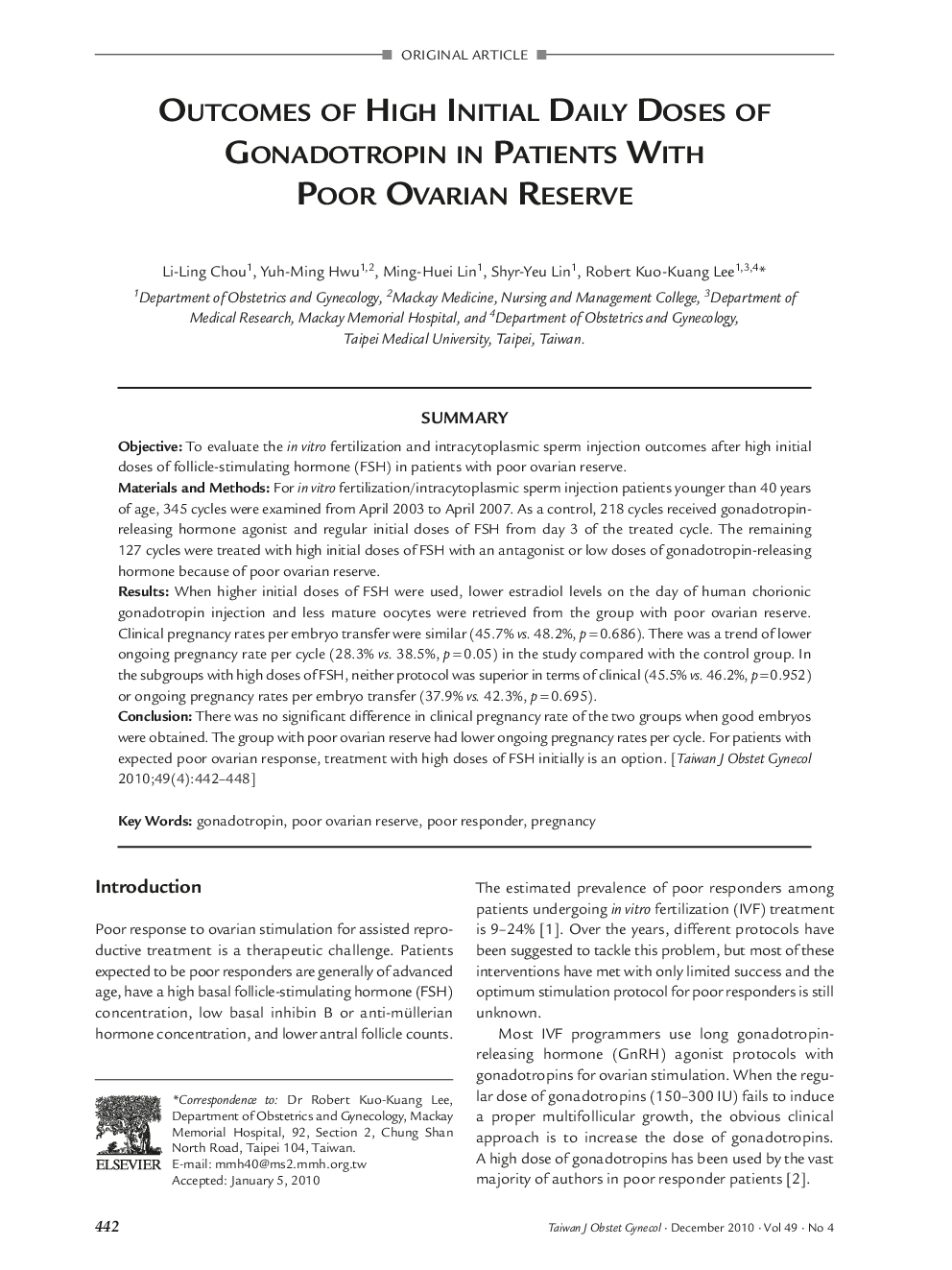| Article ID | Journal | Published Year | Pages | File Type |
|---|---|---|---|---|
| 3975875 | Taiwanese Journal of Obstetrics and Gynecology | 2010 | 7 Pages |
SummaryObjectiveTo evaluate the in vitro fertilization and intracytoplasmic sperm injection outcomes after high initial doses of follicle-stimulating hormone (FSH) in patients with poor ovarian reserve.Materials and MethodsFor in vitro fertilization/intracytoplasmic sperm injection patients younger than 40 years of age, 345 cycles were examined from April 2003 to April 2007. As a control, 218 cycles received gonadotropin-releasing hormone agonist and regular initial doses of FSH from day 3 of the treated cycle. The remaining 127 cycles were treated with high initial doses of FSH with an antagonist or low doses of gonadotropin-releasing hormone because of poor ovarian reserve.ResultsWhen higher initial doses of FSH were used, lower estradiol levels on the day of human chorionic gonadotropin injection and less mature oocytes were retrieved from the group with poor ovarian reserve. Clinical pregnancy rates per embryo transfer were similar (45.7% vs. 48.2%, p = 0.686). There was a trend of lower ongoing pregnancy rate per cycle (28.3% vs. 38.5%, p = 0.05) in the study compared with the control group. In the subgroups with high doses of FSH, neither protocol was superior in terms of clinical (45.5% vs. 46.2%, p=0.952) or ongoing pregnancy rates per embryo transfer (37.9% vs. 42.3%, p=0.695).ConclusionThere was no significant difference in clinical pregnancy rate of the two groups when good embryos were obtained. The group with poor ovarian reserve had lower ongoing pregnancy rates per cycle. For patients with expected poor ovarian response, treatment with high doses of FSH initially is an option.
